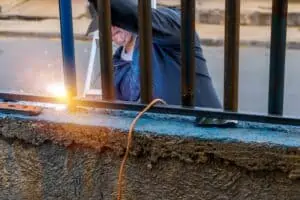How to Install a Metal Fencing How-To?
The right fence can add beauty to your property, keep you safe, and protect against wildlife. However, deciding which type of metal fence is best for your home can be difficult. There are several factors to consider, including cost, visibility, and privacy. Here are some tips to help you make the right choice for your needs.
(Looking for vinyl fence pricing? Contact us to know more!)

The first step in installing a metal fence is to determine the size and shape of the perimeter. You can use a site plan or get an accurate measurement from your local building department or homeowners association.
Next, map out the fence’s edges and corners. Mark them with spray paint to make sure the posts are spaced evenly and correctly. Drive stakes at each corner and where the fence changes direction. The stretch string between each set of stakes and a few inches off the ground.
Position the line posts and then assemble the fence sections one at a time, beginning with the corner or end posts. Fasten the posts with the included fasteners. Then, insert the panels into the posts and connect them. Continue this process until you reach the other corner or end, then go back and connect the next panel to the post.
Once the entire fence is assembled, you can finish it by filling in the post holes with concrete. A do-it-yourselfer can tackle this project, but it requires precision and a little experience.
Alternatively, you can hire a fencing contractor to do the job for you. A reputable contractor will know the proper method for digging post holes and will be able to ensure that they’re level and well-placed.
Before starting to install the fence, it’s important to call 811 and get the names of any buried utility lines on your property. This will save you from cutting through water, electrical, or telephone lines when you’re digging the posts.
To prevent rust, be sure to remove all overgrown vegetation that may trap moisture. Vines and other plants are especially bad for rusting metal, and they can also hide problem areas from view.
You’ll also want to remove any weeds that are growing between the pickets and posts, as they will increase the chances of rust. Trimming the weeds will make the entire area look more aesthetically appealing, and it’ll keep them from growing out of control.
Using the appropriate materials to build your fence is crucial to its durability. If the material you choose is prone to rust, it will need to be painted or sealed regularly. Similarly, you will need to regularly wash the fence to remove dirt that could cause rust.
The strongest and most durable metal fence is iron, although aluminum can be a good alternative. If you decide to purchase an aluminum fence, be sure to check the manufacturer’s instructions for care and maintenance.
Most types of metal fences come in kits with the hardware you need to assemble them. You can usually buy these kits at a home improvement store, but you might need to visit a fencing dealer for specific parts. Some kits are sold with gates, but they aren’t included in most.

